|
The former is a great white grape indigenous to Marches, the latter was born in
Germany, result of a successful crossing, it then travels to Switzerland and
then to Italy. Wines produced with Verdicchio - the white berried grape queen
of vineyards in Marches - have been defined by many as “reds dressed in
white”. A definition that, to tell the truth, is also used for other white
wines, usually for those that - when they are tasted - express a pretty robust
structure. Müller Thurgau has a quite different character, having in the
freshness of aromas its primary personality and, in terms of structure, its
wines have a quite weaker body. Even Verdicchio, of course, gives wines
expressing pleasing olfactory sensations, however the character of the two
wines is quite distant one from each other, however characterized by their own
elegance.
These two varieties are generally used alone for the production of wines,
rarely blended to other grapes. This characteristic, common to Verdicchio and
Müller Thurgau, allows these two grapes to express a remarkable wine making
versatility, from dry whites to sweet wines produced with dried grapes,
including sparkling wines, both Charmat and Classic Method. The spreading of
the two grapes, because of the characteristic of being rarely used blended to
other grapes, is pretty limited. Whether Müller Thurgau is found in some
regions of Italy - as well as in other areas of the world - Verdicchio is
virtually found in Marches only. The rare cases in which we find Verdicchio
outside the borders of its original region, it is always blended to other
grapes, however, it is never the dominant grape. Two grapes, very different one
from each other, certainly suited for a comparative tasting by contrast.
Verdicchio is the main white berried grape of Marches and this region is its
homeland. Verdicchio has a strong connection with Marches and, wines produced
with this grape in other regions, do not express the same character and
personality. The origin of Verdicchio is not clear, however it is believed to
be an indigenous variety of Marches and the grape - as a matter of fact - does
not have any genetic analogy with other grapes. The first written documents
which could be associated to Verdicchio are dated back to the middle times. It
is about notary deeds in which are described vineyards which could refer to
the famous white berried grape of Marches. It is only in the half of the
1500s we can find the first written mention of Verdicchio in a document. Grape
always used for the production of wine, it will be only at the end of 1700s
they will finally understand its huge wine making potentials, therefore
becoming - with no doubt - among the most important grapes of Marches and then
of Italy.
Castelli di Jesi and Matelica are the main areas for the production of
Verdicchio, of which Cupramontana is the most significant and famous place.
Verdicchio gets its name from the characteristic color of its berries -
Verdicchio in Italian means something having greenish nuances -
with evident green hues and that, frequently, are also found in its wines.
Verdicchio is marginally spread in Abruzzo, Umbria and Latium, however in none
of these regions is capable of expressing interesting results. Verdicchio is
famous for its wines having a good structure and a vibrant crispness. Grape of
remarkable versatility, Verdicchio proves its wine making value also in the
production of sparkling wines, both using the Charmat and Classic Method with
the refermentation in bottle. By properly allowing the withering of grapes, it
gives sweet wines of excellent elegance, characterized by a good structure and
crispness, a fundamental characteristic for the balance in this style of wines.
The history of Müller Thurgau is more clear as it is a crossing created at
the end of 1800s, in that time in which many attempts were made in order to
improve grapes by means of crossing and hybridization. In 1882 Prof. Hermann
Müller - at those time working at the Geisenheim Grape Breeding Institute,
Germany - was trying to combine the finesse and intensity of Riesling to the
ability to ripen earlier of Sylvaner. The resulting crossing did not have the
characteristics he wanted, however it quickly became successful in Germany.
Prof. Müller decider to call the new crossing Müller Thurgau, by adding to
his family name Thurgau (Thurgovia), the Swiss canton where he was born in. For
many decades this grape was considered to be the crossing of Riesling with
Sylvaner, however recent genetic researches allowed to understand Müller
Thurgau is a crossing of Riesling with Madeleine Royale.
|
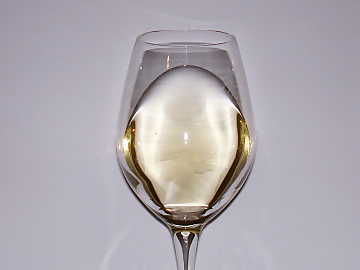 | |
| The color of
Müller Thurgau in the glass. It should be noticed its evident greenish yellow
nuances. | |
|
This variety is still today quite spread in many areas of Europe and it is also
found in Australia, New Zealand and United States of America. Müller
Thurgau is also cultivated in Italy, in particular in Trentino Alto Adige
region where it is capable of making interesting and characteristic wines,
especially in the Val di Cembra area. In Italy this variety is also cultivated
in Sicily for the production of table and sparkling wines. Müller Thurgau
makes wines characterized by aromas which could recall aromatic varieties,
while noticing this grape does not belong to this category. This characteristic
makes Müller Thurgau suited to the production of Charmat sparkling wines,
capable of enhancing the aromatic profile of the grape. Wines of a light body,
of immediate and pleasing crispness, it is preferred to vinify this grape in
inert containers in order to favor the typical characteristics of Müller
Thurgau and its aromas.
Our comparative tasting by contrast will evaluate a Verdicchio dei Castelli di
Jesi and a Müller Thurgau from Trentino Alto Adige, both belonging to the
same vintage. We will choose two young wines, therefore of the current vintage,
while making sure they have been vinified in inert containers, preferably in
steel tanks. On this regard it should be noticed that if it is true Müller
Thurgau is virtually vinified in steel tanks only, in certain cases Verdicchio
is fermented and aged in cask, even barrique. The two wines will be served in
two distinct tasting glasses at a temperature of 10 °C (50 °F). This
temperature will in fact allow the best appreciation of crispness in both wines
while ensuring the right perception of typical aromatic qualities of Verdicchio
and Müller Thurgau.
We will start our comparative tasting by contrast by observing the two wines in
the glass. Two wines being very different in their appearance, in which can be
recognized - like to say - the climate of the respective lands of production.
Let's start by observing the glass of Müller Thurgau in which will be
perceived a brilliant greenish yellow color and a high transparency. Nuances,
observed to the edge of wine by tilting the glass and towards the opening, will
show the same color. Colors characterizing Verdicchio dei Castelli di Jesi are
more intense and bright than Müller Thurgau. The color of this famous white
wine from Marches expresses an intense straw yellow color, in which can be
frequently seen nuances of greenish yellow that - among the other things - is
what gives the name to this grape. Let's tilt the glass and observe nuances, at
the edge of the wine towards the opening. Also in this case we will see a straw
yellow color with evident nuances of greenish yellow.
The evaluation of aromas of Müller Thurgau and Verdicchio offers two
olfactory profiles very different one from each other. The famous crossing of
Prof. Hermann Müller, because of its characteristic aromas of fruits and,
sometimes, grape, can be confused with an aromatic variety, a category to which
this grape does not belong to. The aromatic exuberance of Müller Thurgau
gives its wines very pleasing aromas of fruits, most of the times of immediate
perception to the nose and appreciated for this reason. Verdicchio has a quite
different character, with strong aromas which can sometimes be of dried fruits
as well. In the famous white berried grape of Marches we in fact find
sensations directly recalling white fruits, as well as flowers and a pleasing
sensation of almond which is an identifying character for this variety.
Verdicchio has a remarkable longevity, something allowing an interesting
development of aromas while keeping its frank and sharp character.
The first wine of which we will evaluate aromas is Müller Thurgau. By holding
the glass in vertical position and, without swirling, let's proceed with the
first smell in order to appreciate the opening of wine. From the glass will be
perceived intense aromas of peach, apple and pineapple, as well as the
characteristic hint of grape recalling, in many ways, aromatic varieties. After
having swirled the glass, the wine completes its olfactory profile with flowers
and fruits, in particular hawthorn and broom, as well as pear, banana, apricot,
elder and sage. Let's now pass to the glass of Verdicchio dei Castelli
di Jesi. The opening of this wine offers to the nose of the taster aromas of
apple, pear, hawthorn and the characteristic hint of almond. Let's now proceed
with the swirling of the glass in order to favor the development of the other
aromas and let's do a second smell. We will perceive aromas of plum, broom,
peach, citrus fruits, chamomile, thyme and pineapple.
Differences between the two wines becomes quite distant in the evaluation of
taste. Let's take a sip of Müller Thurgau and evaluate its attack in the
mouth. It will be perceived a pleasing crispness and, soon after, a sensation
of pretty moderate structure, however balanced by alcohol. Correspondence to
the nose is very good: it will be clearly perceived flavors of peach, pear and
pineapple, sometimes supported by a touch of grape. The attack of Verdicchio
dei Castelli di Jesi is characterized by a fuller body when compared to
Müller Thurgau. Also in this wine the crispness of wine is a dominant
quality, generally well balanced by alcohol that, in Verdicchio, it frequently
is higher than 13%. The correspondence to the nose is very good and it can be
clearly perceived apple, pear, plum and, the typical quality of Verdicchio,
almond. Two wines, without doubt, that on this regard, are very different one
from each other.
The ending part of our tasting is about the final sensations produced by the
wines after having swallowed them. The finish of Müller Thurgau expresses a
good persistence, leaving in the mouth a pleasing sensation of crispness as
well as flavors perceived during the attack. It will also be possible to
continue perceiving the moderate structure of the wine. Also the finish of
Verdicchio dei Castelli di Jesi is characterized by a good persistence and,
also in this case, it will be perceived an evident crispness and a good body.
It will also be perceived the typical flavors of this wine, as well as the
characteristic quality of Verdicchio recalling the flavor of almond. The
pleasing crispness of both wines make them particularly agreeable while
inviting - like to say - to fill the glass again. Two wines and two grapes very
different one from each other, expression of two distant characters however
agreeable and of interesting sensorial value.
|


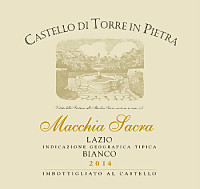
 Fiano
Fiano Brilliant ruby red and nuances of straw yellow, very transparent.
Brilliant ruby red and nuances of straw yellow, very transparent. Intense, clean, pleasing and refined, starts with hints of plum,
hazelnut and honey followed by aromas of pear jam, hawthorn, ripe apple and
iodine.
Intense, clean, pleasing and refined, starts with hints of plum,
hazelnut and honey followed by aromas of pear jam, hawthorn, ripe apple and
iodine.
 Crisp attack and however balanced by alcohol, good body, intense
flavors, pleasing roundness.
Crisp attack and however balanced by alcohol, good body, intense
flavors, pleasing roundness.
 Persistent finish with flavors of plum, hazelnut and honey.
Persistent finish with flavors of plum, hazelnut and honey. 2 months in cement tanks, 4 months in bottle.
2 months in cement tanks, 4 months in bottle. Pasta with mushrooms, Roasted white meat, Roasted fish, Mushroom soups
Pasta with mushrooms, Roasted white meat, Roasted fish, Mushroom soups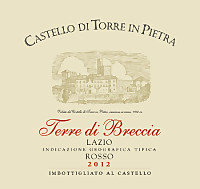
 Montepulciano, Sangiovese, Cesanese
Montepulciano, Sangiovese, Cesanese Intense ruby red and nuances of garnet red, little transparency.
Intense ruby red and nuances of garnet red, little transparency. Intense, clean, pleasing and refined, starts with hints of black
cherry, plum and blueberry followed by aromas of violet, raspberry,
blackberry, tobacco, vanilla, carob and menthol.
Intense, clean, pleasing and refined, starts with hints of black
cherry, plum and blueberry followed by aromas of violet, raspberry,
blackberry, tobacco, vanilla, carob and menthol.
 Properly tannic attack and however balanced by alcohol, good body,
intense flavors, pleasing roundness.
Properly tannic attack and however balanced by alcohol, good body,
intense flavors, pleasing roundness.
 Persistent finish with flavors of plum, black cherry and blueberry.
Persistent finish with flavors of plum, black cherry and blueberry. 9 months in cask, 9 months in bottle.
9 months in cask, 9 months in bottle. Stuffed pasta with meat, Broiled meat and barbecue, Stewed meat, Roasted meat
Stuffed pasta with meat, Broiled meat and barbecue, Stewed meat, Roasted meat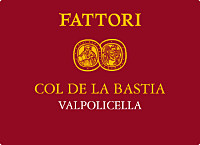
 Corvina (65%), Corvinone (15%), Rondinella (10%), Other Grapes (10%)
Corvina (65%), Corvinone (15%), Rondinella (10%), Other Grapes (10%) Brilliant ruby red and nuances of ruby red, moderate transparency.
Brilliant ruby red and nuances of ruby red, moderate transparency. Intense, clean, pleasing and refined, starts with hints of black
currant, black cherry and violet followed by aromas of blueberry, plum,
vanilla, cocoa and eucalyptus.
Intense, clean, pleasing and refined, starts with hints of black
currant, black cherry and violet followed by aromas of blueberry, plum,
vanilla, cocoa and eucalyptus.
 Properly tannic attack and however balanced by alcohol, good body,
intense flavors, pleasing roundness.
Properly tannic attack and however balanced by alcohol, good body,
intense flavors, pleasing roundness.
 Persistent finish with flavors of black currant, black cherry and plum.
Persistent finish with flavors of black currant, black cherry and plum. Aged in steel tanks and cask.
Aged in steel tanks and cask. Stuffed pasta, Broiled meat and barbecue, Stewed meat
Stuffed pasta, Broiled meat and barbecue, Stewed meat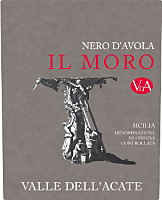
 Nero d'Avola
Nero d'Avola Intense ruby red and nuances of ruby red, moderate transparency.
Intense ruby red and nuances of ruby red, moderate transparency. Intense, clean, pleasing and refined, starts with hints of blackberry,
plum and violet followed by aromas of black cherry, raspberry, blueberry,
cinnamon, carob and vanilla.
Intense, clean, pleasing and refined, starts with hints of blackberry,
plum and violet followed by aromas of black cherry, raspberry, blueberry,
cinnamon, carob and vanilla.
 Properly tannic attack and however balanced by alcohol, good body,
intense flavors, agreeable.
Properly tannic attack and however balanced by alcohol, good body,
intense flavors, agreeable.
 Persistent finish with flavors of blackberry, plum and raspberry.
Persistent finish with flavors of blackberry, plum and raspberry. 12 months in steel tanks, cask and bottle.
12 months in steel tanks, cask and bottle. Broiled meat and barbecue, Sauteed meat with mushrooms, Stuffed pasta, Hard cheese
Broiled meat and barbecue, Sauteed meat with mushrooms, Stuffed pasta, Hard cheese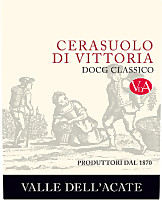
 Nero d'Avola (60%), Frappato (40%)
Nero d'Avola (60%), Frappato (40%) Brilliant ruby red and nuances of ruby red, moderate transparency.
Brilliant ruby red and nuances of ruby red, moderate transparency. Intense, clean and pleasing, starts with hints of blackberry, plum and
black cherry followed by aromas of violet, raspberry, blueberry, carob,
tobacco and vanilla.
Intense, clean and pleasing, starts with hints of blackberry, plum and
black cherry followed by aromas of violet, raspberry, blueberry, carob,
tobacco and vanilla.
 Properly tannic attack and however balanced by alcohol, good body,
intense flavors, pleasing crispness.
Properly tannic attack and however balanced by alcohol, good body,
intense flavors, pleasing crispness.
 Persistent finish with flavors of blackberry, plum and raspberry.
Persistent finish with flavors of blackberry, plum and raspberry. 12 months in cask, 9 months in bottle.
12 months in cask, 9 months in bottle. Roasted meat, Stuffed pasta with meat, Stewed meat with mushrooms
Roasted meat, Stuffed pasta with meat, Stewed meat with mushrooms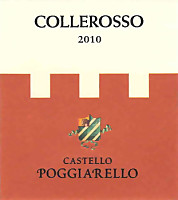
 Cabernet Franc (50%), Merlot (50%)
Cabernet Franc (50%), Merlot (50%) Intense ruby red and nuances of garnet red, little transparency.
Intense ruby red and nuances of garnet red, little transparency. Intense, clean, pleasing, refined and elegant, starts with hints of
black currant, plum and black cherry followed by aromas of blueberry,
violet, iris, vanilla, chocolate, tobacco, mace and eucalyptus.
Intense, clean, pleasing, refined and elegant, starts with hints of
black currant, plum and black cherry followed by aromas of blueberry,
violet, iris, vanilla, chocolate, tobacco, mace and eucalyptus.
 Properly tannic attack and however balanced by alcohol, good body,
intense flavors, pleasing roundness.
Properly tannic attack and however balanced by alcohol, good body,
intense flavors, pleasing roundness.
 Persistent finish with flavors of black currant, black cherry and plum.
Persistent finish with flavors of black currant, black cherry and plum. Aged in barrique.
Aged in barrique. Roasted meat, Broiled meat and barbecue, Stewed and braised meat, Hard cheese
Roasted meat, Broiled meat and barbecue, Stewed and braised meat, Hard cheese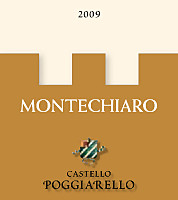
 Cabernet Franc
Cabernet Franc Brilliant ruby red and nuances of garnet red, little transparency.
Brilliant ruby red and nuances of garnet red, little transparency. Intense, clean, pleasing, refined and elegant, starts with hints of
black currant, black cherry and plum followed by aromas of blueberry,
violet, vanilla, chocolate, tobacco, leather, pink pepper, mace and
eucalyptus.
Intense, clean, pleasing, refined and elegant, starts with hints of
black currant, black cherry and plum followed by aromas of blueberry,
violet, vanilla, chocolate, tobacco, leather, pink pepper, mace and
eucalyptus.
 Properly tannic attack and however balanced by alcohol, good body,
intense flavors, agreeable.
Properly tannic attack and however balanced by alcohol, good body,
intense flavors, agreeable.
 Persistent finish with flavors of black currant, black cherry and plum.
Persistent finish with flavors of black currant, black cherry and plum. 12 months in barrique.
12 months in barrique. Roasted meat, Stewed and braised meat, Broiled meat and barbecue, Hard cheese
Roasted meat, Stewed and braised meat, Broiled meat and barbecue, Hard cheese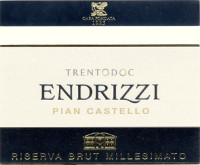
 Chardonnay (60%), Pinot Nero (40%)
Chardonnay (60%), Pinot Nero (40%) Brilliant straw yellow and nuances of greenish yellow, very
transparent, fine and persistent perlage.
Brilliant straw yellow and nuances of greenish yellow, very
transparent, fine and persistent perlage.
 Intense, clean, pleasing, refined and elegant, starts with hints of
apple, banana and hazelnut followed by aromas of pear, hawthorn, flint,
bread crust, plum, yeast, citrus fruits, honey and hints of vanilla.
Intense, clean, pleasing, refined and elegant, starts with hints of
apple, banana and hazelnut followed by aromas of pear, hawthorn, flint,
bread crust, plum, yeast, citrus fruits, honey and hints of vanilla.
 Effervescent and crisp attack, however balanced by alcohol, good body,
intense flavors, pleasing roundness.
Effervescent and crisp attack, however balanced by alcohol, good body,
intense flavors, pleasing roundness.
 Persistent finish with flavors of apple, banana and pear.
Persistent finish with flavors of apple, banana and pear. Refermentation in bottle and aged on its lees for about 5 years.
Refermentation in bottle and aged on its lees for about 5 years. Pasta with fish, Broiled crustaceans, Roasted fish, Roasted white meat
Pasta with fish, Broiled crustaceans, Roasted fish, Roasted white meat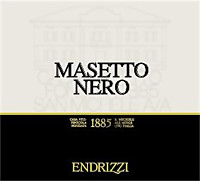
 Teroldego
Teroldego Deep ruby red and nuances of ruby red, impenetrable to light.
Deep ruby red and nuances of ruby red, impenetrable to light. Intense, clean, pleasing, refined and elegant, starts with hints of
plum, blackberry and black cherry followed by aromas of violet, blueberry,
vanilla, pink pepper, tobacco, chocolate, cinnamon, mace and menthol.
Intense, clean, pleasing, refined and elegant, starts with hints of
plum, blackberry and black cherry followed by aromas of violet, blueberry,
vanilla, pink pepper, tobacco, chocolate, cinnamon, mace and menthol.
 Tannic attack and however balanced by alcohol, full body, intense
flavors, pleasing roundness.
Tannic attack and however balanced by alcohol, full body, intense
flavors, pleasing roundness.
 Very persistent finish with long flavors of plum, blackberry and black
cherry.
Very persistent finish with long flavors of plum, blackberry and black
cherry.
 20 months in barrique, 6 months in bottle.
20 months in barrique, 6 months in bottle. Game, Roasted meat, Stewed and braised meat, Hard cheese
Game, Roasted meat, Stewed and braised meat, Hard cheese
